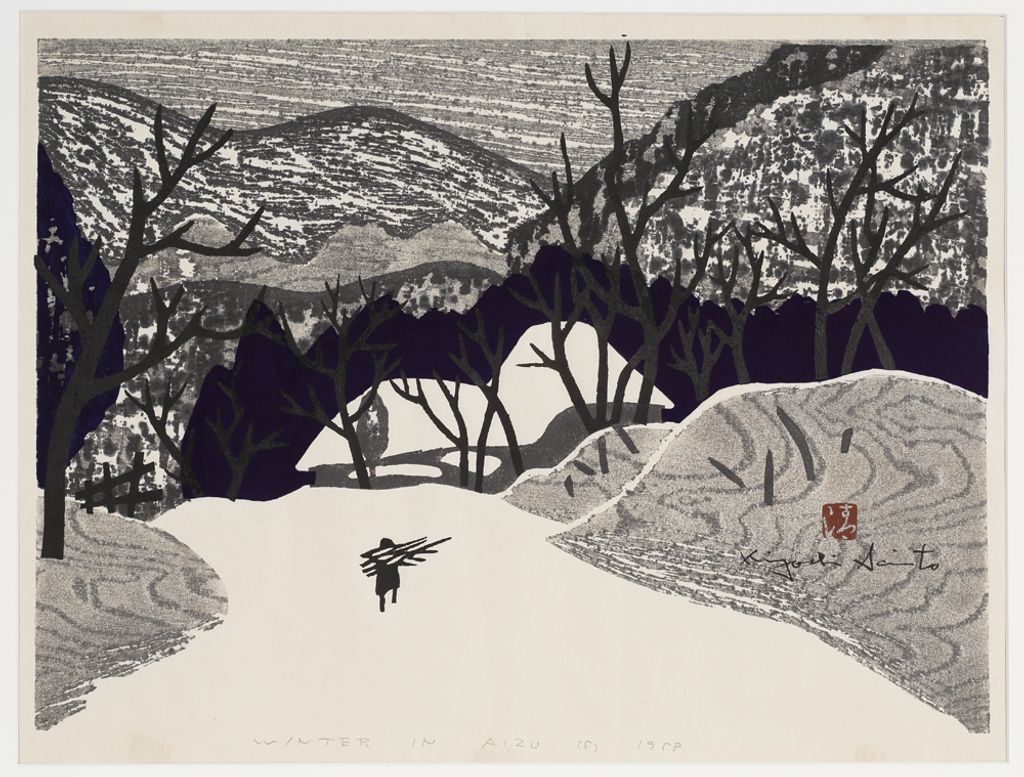Students Select: Makena Smith '25 on Kiyoshi Saito's "Winter in Aizu"



Growing up with my Japanese grandmother drove me to have a strong love and appreciation for Japanese culture and art. So when I got the opportunity to write about any artwork in the Lehigh University Art Galleries [LUAG] exhibit, it was no surprise that Winter in Aizu (1958) by Kiyoshi Saito (1907-1997) spoke to me. Kiyoshi Saito was born in Fukushima, Japan, and started his art journey humbly as a sign painter's apprentice. Even though he was trained as a painter of all sorts, he also dabbled in sculpture and eventually decided to venture into printmaking. In his art exploration, he became one of the most Japanese print artists of the 20th century. When I learned that he was a pivotal part of Japanese printmaking, I knew I had to write about this artwork for multiple reasons. The main one was to highlight a Japanese artist that isn’t Hokusai. As much as Hokusai did for painting and showcasing Japanese art, everyone knows him in some way. Whether it is The Great Wave off Kanagawa, more well known as simply “The Great Wave,” or even the iPhone emoji of a wave that was modeled after this Hoksai piece. Hokusai is not the only Japanese artist who deserves recognition.
Winter in Aizu is part of a series of woodblock prints with various winter landscapes in Japan. Although it is difficult to achieve three-dimensionality in prints, he does so in all of them. In the Winter in Aizu print that is in the LUAG, he depicted mountains and forest landscapes and a wandering person in the snow. He is able to show depth in this piece by varying the sizes of the mountains and by using a greyscale palette to convey distance. However, the greyscale of this piece not only conveys depth but also the muted colors, gives the painting a very lonely feeling. However, when I see this, I don’t just feel lonely in a negative way, but it almost makes me feel at peace. When I look at the print it feels like it is giving me a headspace in which I can enjoy this artwork without the weight of outside opinion.
Makena Smith '25
Major: Art History